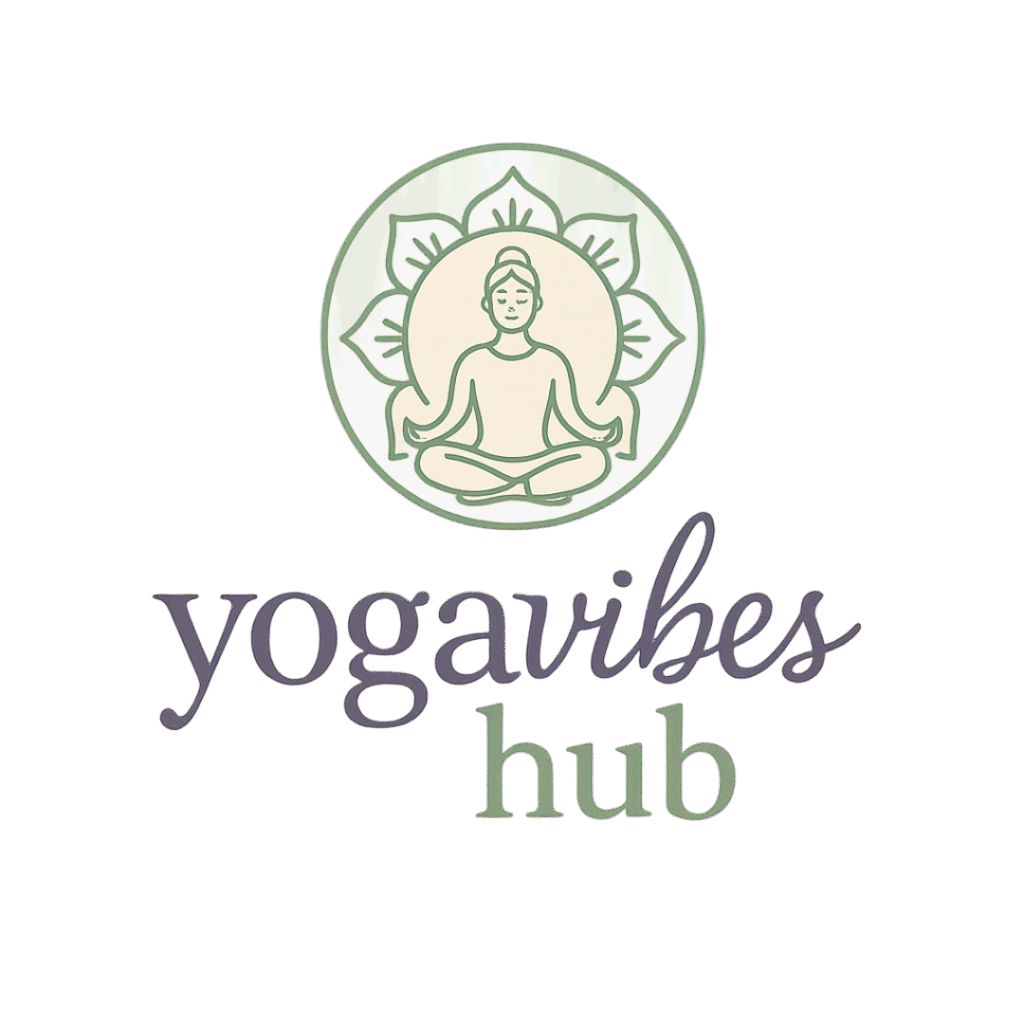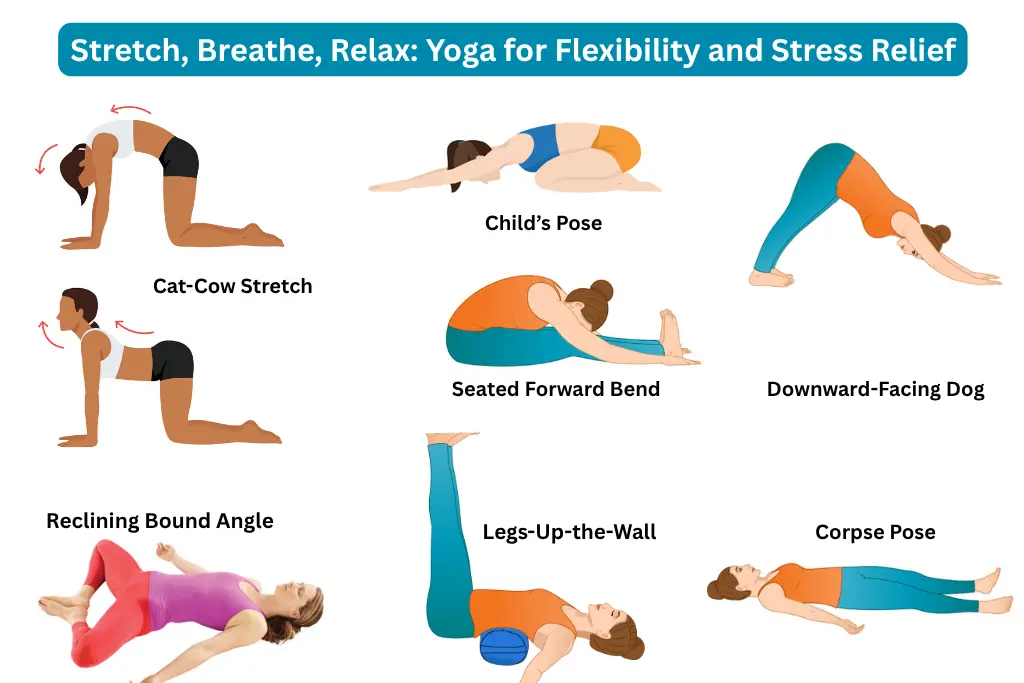Yoga for stress and flexibility offers a natural, powerful method to nurture both your body and mind. By harmonizing breath with movement, yoga becomes more than just exercise—it’s a gateway to self-awareness and healing. Yoga for Flexibility specifically helps release tension in the muscles while improving mobility over time. Whether you suffer from tight muscles or mental fatigue, stress relief yoga can bring noticeable change.
In this guide, we’ll walk you through a beginner yoga routine featuring simple, calming poses. These yoga stretches are perfect for home practice and don’t require prior experience or equipment.
Table of Contents
ToggleWhy Practice Yoga for Flexibility and Stress Relief?
Yoga for Flexibility: More Than Just Stretching
Yoga gradually increases your flexibility by gently lengthening muscles and improving joint mobility. Practicing yoga for flexibility at home improves posture, relieves stiffness, and enhances movement. Research shows that consistent practice can increase flexibility by up to 35% in just two months.
Yoga for Stress Relief: A Natural, Holistic Approach
When breath aligns with gentle movement, it reduces cortisol (the stress hormone), helps relieve anxiety, and supports emotional resilience. This makes yoga for stress an ideal practice for today’s fast-paced lifestyle and complements the physical aspects of Yoga for Flexibility.
Beginner Yoga Routine for Flexibility and Stress Relief
This beginner-friendly yoga routine is designed for all levels and can be practiced at home. These gentle yoga poses help you unwind, stretch safely, and feel more centered.
Warm-Up (2–3 minutes)
Start with deep, mindful breathing. Inhale through the nose, exhale slowly. Focus on calming your thoughts and preparing your body for Yoga for Flexibility.
Yoga Poses for Flexibility and Stress Relief
Cat-Cow Stretch (Marjaryasana–Bitilasana)
- Start on hands and knees.
- A classic gentle yoga stretch for spinal flexibility.
Child’s Pose (Balasana)
- Sit on your heels and fold forward.
- Rest your arms and forehead on the floor.
- One of the best yoga poses for relaxation and emotional grounding, also supporting Yoga for Flexibility.
Downward-Facing Dog (Adho Mukha Svanasana)
- Lift your hips into an inverted V-shape.
- Stretches legs, spine, and shoulders; improves circulation.
Seated Forward Bend (Paschimottanasana)
- Extend your legs forward and reach toward your feet.
- A soothing pose to calm the nervous system and release lower back tension.
Reclining Bound Angle (Supta Baddha Konasana)
- Lie on your back, bring the soles of your feet together, and let your knees fall outward.
- Promotes deep inner relaxation and opens the hips—perfect for Yoga for Flexibility and stress relief.
Legs-Up-the-Wall (Viparita Karani)
- Excellent for stress relief, reducing fatigue, and aiding circulation.
Corpse Pose (Savasana)
- A final meditative pose that allows your body to fully integrate the benefits of the practice.
Additional Poses for Flexibility and Calm
Add these to your routine for deeper Yoga for Flexibility benefits:
- Low Lunge (Anjaneyasana) – Opens hips, strengthens legs
- Supine Spinal Twist – Releases spinal tension and aids digestion
These poses work well as part of a yoga for flexibility at home sequence.
Top Benefits of Stress Relief Yoga
Physical Benefits
Practicing yoga regularly can lead to noticeable improvements in overall physical health.
It improves posture and flexibility, helping you move more freely and maintain better alignment throughout your day.
Yoga also reduces muscle tension by gently stretching tight areas and releasing stored physical stress.
With increased circulation and movement, it boosts energy and balance, making you feel more grounded and revitalized.
Over time, consistent practice has been shown to strengthen immune function, helping your body better defend itself against illness and fatigue.
Mental & Emotional Benefits
Yoga is not just a physical practice—it deeply impacts the mind and emotions.
It naturally lowers stress and anxiety levels by activating the parasympathetic nervous system through slow breathing and mindfulness.
As you develop greater awareness on the mat, you’ll find it enhances focus and clarity, making daily tasks feel less overwhelming.
A calming practice before bedtime can support better sleep and emotional stability, promoting rest and reducing nighttime restlessness.
Most importantly, yoga encourages mindfulness and peace of mind, creating a safe space for self-reflection and inner calm.
Tips for Safe Practice
- Start slow and never push through pain
- Use props like cushions or blocks for support
- Maintain deep, steady breathing throughout
- Practice regularly—even 10 minutes can make a difference
- End your session with gratitude and stillness
Conclusion
Whether you’re looking to reduce anxiety, ease body stiffness, or simply feel better overall, yoga for stress and flexibility offers a simple yet powerful solution. This beginner yoga routine provides a peaceful way to reconnect with yourself. With consistent effort and mindful breath, every stretch brings you closer to clarity, calm, and vibrant health.

